

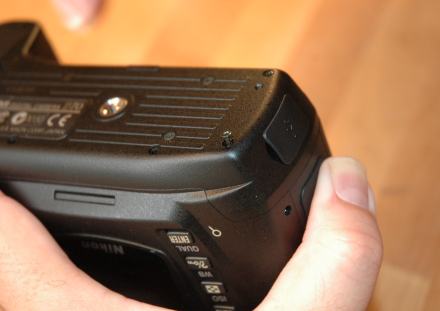


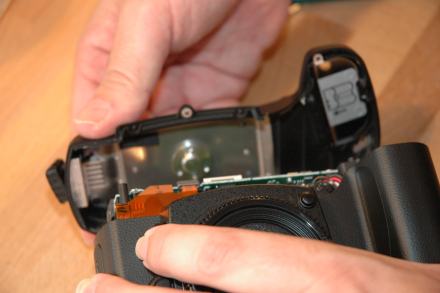
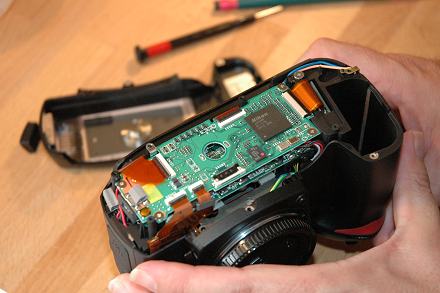
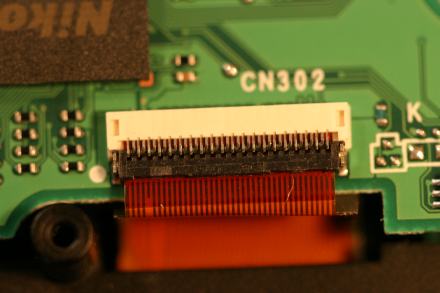
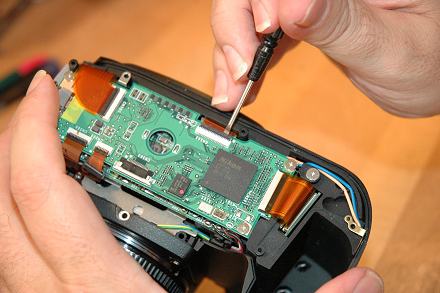
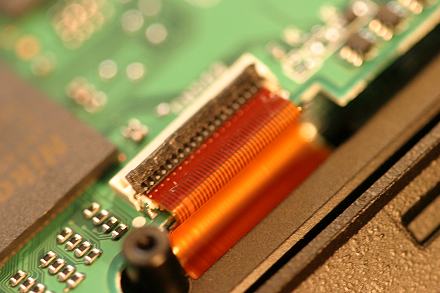
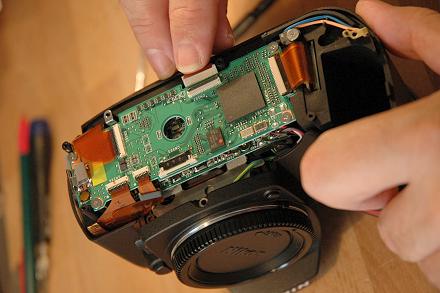
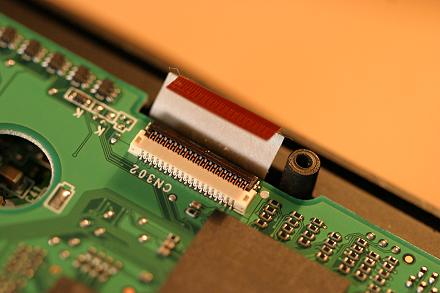
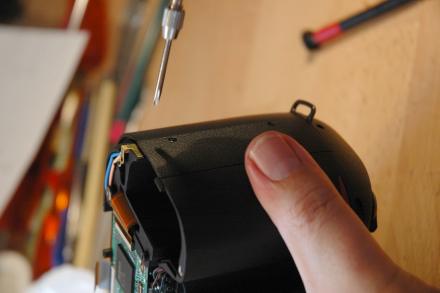
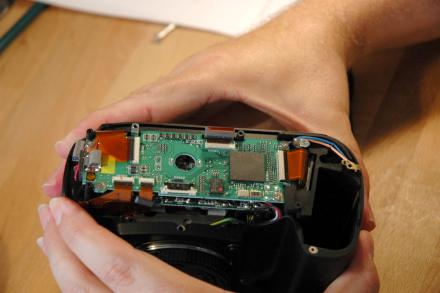
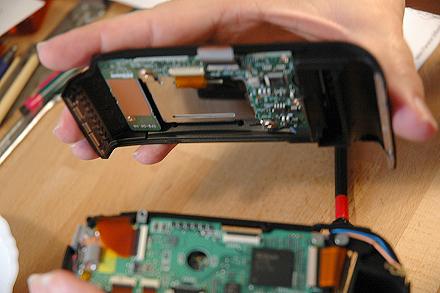
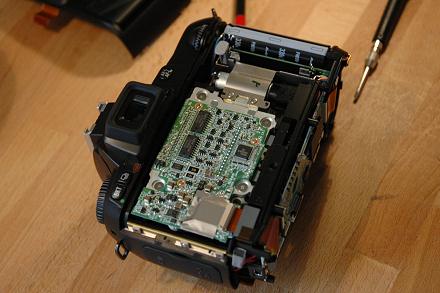
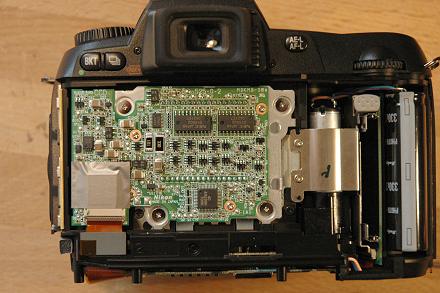
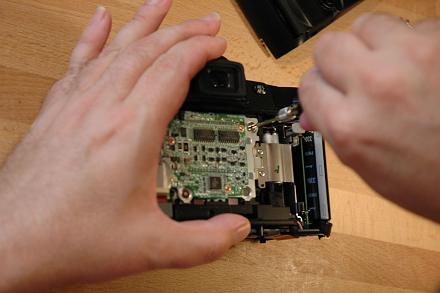

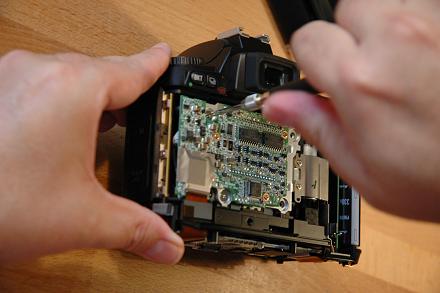
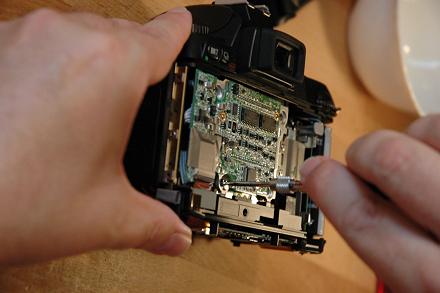
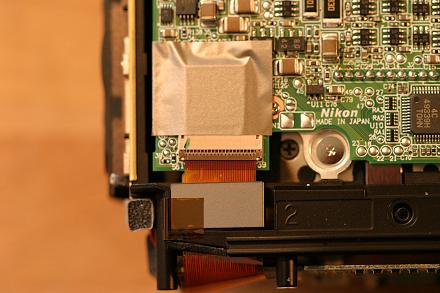
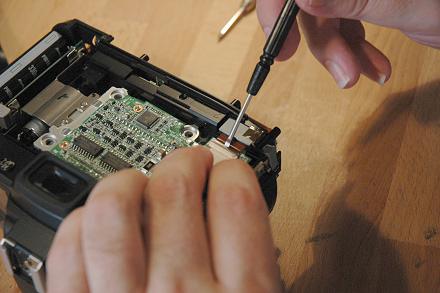

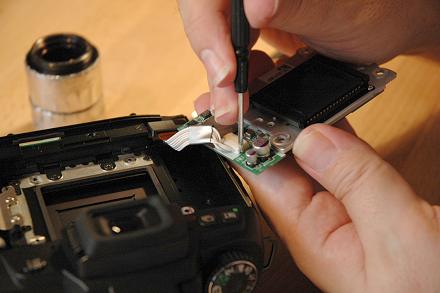

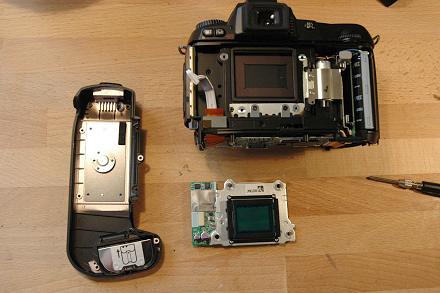
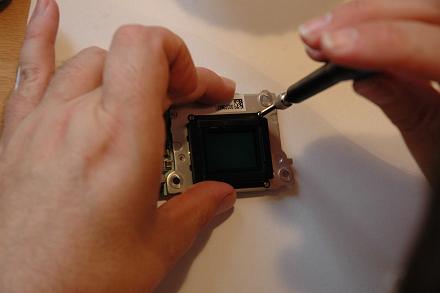
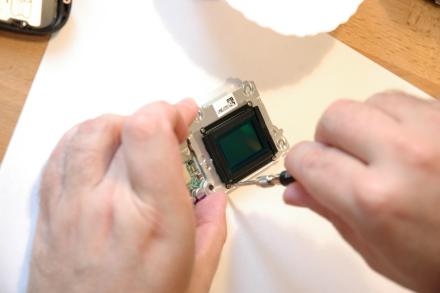
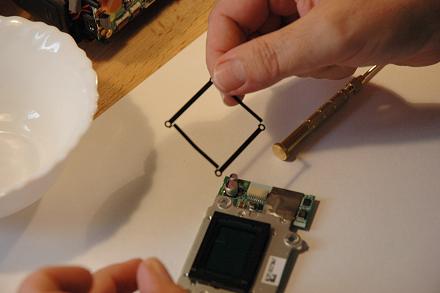
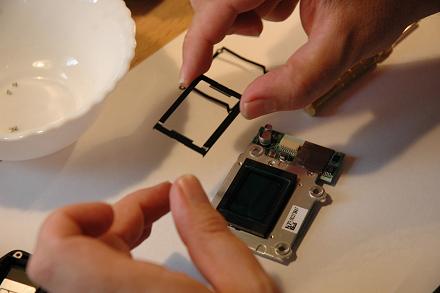


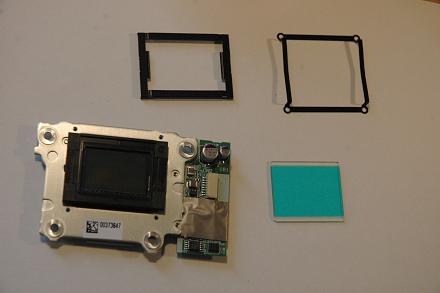
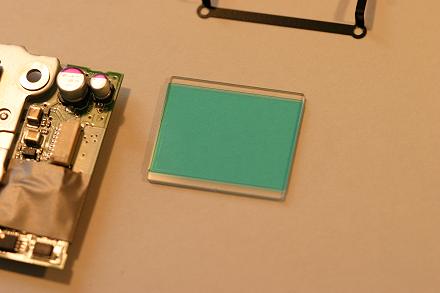
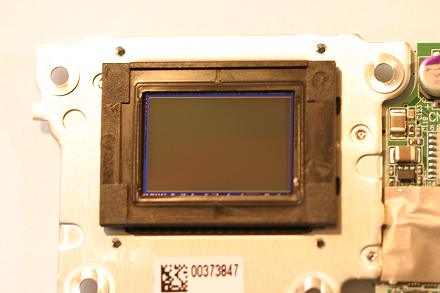
INCREASE THE
RED AND INFRARED RESPONSE OF THE DSLR Nikon D70
Procedure
and Evaluation
Contents
Part
one: An illustrated procedure for remove the original IR blocking filter in
front the detector
Part
two: A quick procedure for remove the filter
Part
three: The spectral performances
Part
four: Night test
Part
five: Infrared test
PART ONE: An illustrated procedure for remove the original IR blocking filter in front the detector
The procedure is not very complicated but the risks of
destroy the camera are not null!.
Remember, the transformation will void the warranty and the camera is not usable
for domestic photography if the original filter is not replaced by a nearly
equivalent (but the change is reversible). See also http://www.lifepixel.com/IR.htm
|
|
|
|
|
|
|
|
|
|
|
|
|
|
|
|
|
|
|
|
|
|
|
|
|
|
|
|
|
|
|
|
|
|
|
|
|
|
|
|
|
|
|
|
|
|
|
|
|
|
|
|
|
|
Photos : Valérie Desnoux
PART TWO: A quick procedure for remove the filter
No cable disconnected. Only 4 screws are removed for the back cover of the camera, and 4 screws for the CCD electronic card. The only necessary tool is a jewellers type screwdriver.

You have now access for the remove the original filter and replace it. The duration of the operation is ten minutes (but remember, the guaranty is out!).
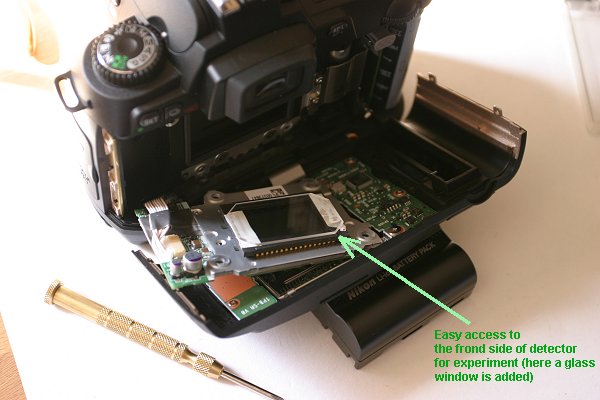
PART THREE: The spectral performances
Spectral sensitivity before and after filter removal operation is compared. Warning, the spectra below do not represent the true D70 spectral response but the product of solar spectral flux distribution by the D70 sensor spectral response.
The visible region (the external filter is an Astronomik IR-block Filter model) :

The infrared region of a modified D70 (at various contrast). A W25 red filtrer is added to eliminate high order spectra of the spectrograph (LORIS):



This
curves shows the ratio of the D70 spectral response with and without the IR
blocking filter. The sensitivity gain is 5 at 656 nm and 20 at 700 nm (very
deep red). Click here for download this data (ASCII
table).
Note :
(a) it is not a surprise, the red response of
a modified D70 is largely increased (gain of 5.0 at the Ha
position)
(b) for wavelengths larger than 820 nm the transmission of RGB
organic filters of the Bayer array are nearly transparent and the sensor is
equivalent to a Black and White detector (same sensitive weigh for all the pixels
- i.e. the CFA interpolation is not necessary = better spatial resolution - a good new).
(c) detection
is possible up to 1 micron (typical for a CCD detector)
(d) if the
detectivity is concerned (variable stars or novae survey research for example),
it is truly recommended to not add an external IR cut-off filter (but achromatic
optic up to 1 micron is necessary - i.e. reflector or a very good apochromatic
refractor).
(e) the
spectral domain for star spectroscopy is doubled. You can also envisage the
observation of
methane clouds on planets Jupiter or Saturn for example, and many more.
(f)
the out-of-focus value D after the operation is given by D=(n-1)/n
x E . In this equation n is the refractive index of the filter
glass (n=1.517 for BK7) and E is the thickness of the filter (E
is near 1.33 mm for the D70). So the defocus value is of 0.46 mm.


Left, a
photography with the internal IR-cut filter in place. Right, the IR-cut filter
is removed: The white balance is largely modified by the increased contribution
of red photons.


An infrared photography
from the modified Nikon D70. A RG10 filter is added front of the lens. Left
a "color" version, right, a black and white version (note the brightness
of the vegetation).
For tests an Edmund Optics IR cutoff filter is added in front of the CCD. The thickness of this filter is 1.1 mm (compare to the 1.33 mm thickness of the original filter - the focus is not perfect). The filter used is circular (D=25mm - ref. 53710). The scared 25x25 mm version exist and it is much more sized (ref. 53711).



Left,
a "domestic" image with the Nikon D70 and the Edmund IR
cutoff filter in place (note the circular contour of the filter - the
25 x 25 mm is here a better choice). This unrectified image - automatic white
balance of the DSLR - show clearly a red excess. For comparison, at right the
same scene with a Canon 10D.


Left, the
modified Nikon D70 image after white balance correction (the red layer is simply
multiplied by the coefficient 0.652 under Iris software). Right, the Canon 10D
image.
Next images, the nebulae NGC7538 taken the 23 October 2004 with the modified Nikon D70 (Edmund red cutoff filter) associated with a Takahashi FSQ106 refractor (crop of the original scaled by the factor 0.75). The observation condition are suburban (severe light pollution, the naked eye limit magnitude is 2). The exposure times are indicated (at ISO 400). The "RGB" image is the classical CFA shot from the DSLR. The "Halpha" image is the red layer only trough an Ha Astronomik interference filter. For the last image the R channel of the original CFA is simply replaced by the Halpha image. Unfortunately the "Mode 1" of the Nikon is used (not the "Mode 3" - better for resolution - click here for details).
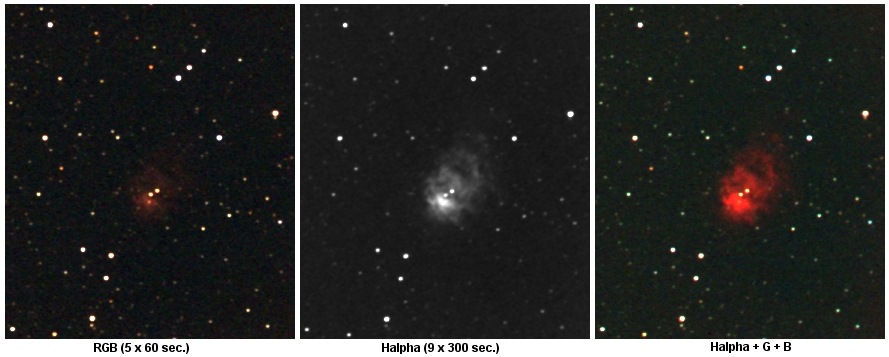
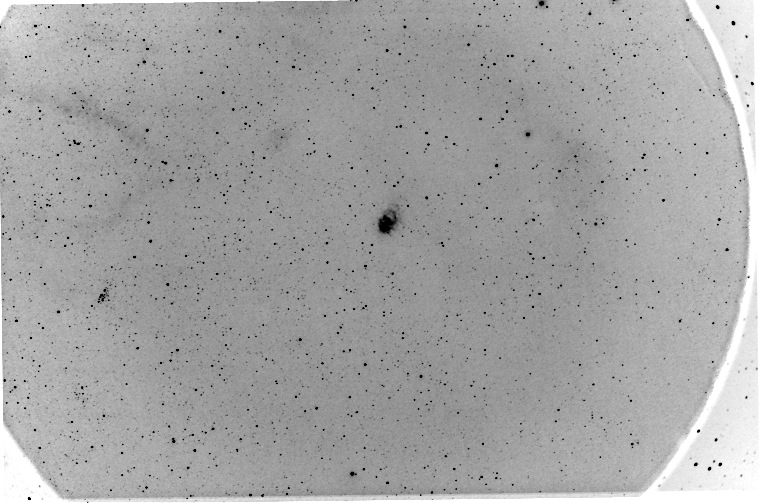
The
full Ha frame
(negative view). Some faint nebulae are visible around NGC7538. Note the
limits of the circular Edmund filter.
Same observation condition for this views of the NGC281 nebulae (crop reduced by a factor 0.5) :
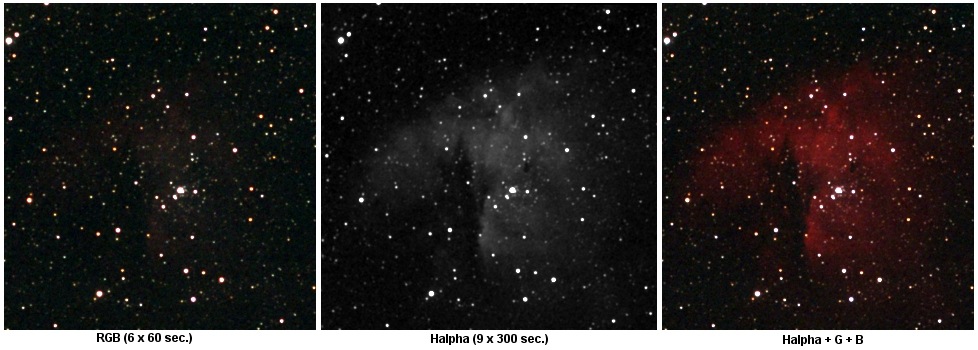
Color composite shots of M42. Left, the image shown is a false-color composite obtained in Ha (red channel), [OIII] (green channel) and Hb (bleue channel) (Astronomik interference filters). Right, the spectral lines used are [SII] (sulphur), Ha and [OIII]. For each filter the total exposure time is of 3 x 300 seconds.
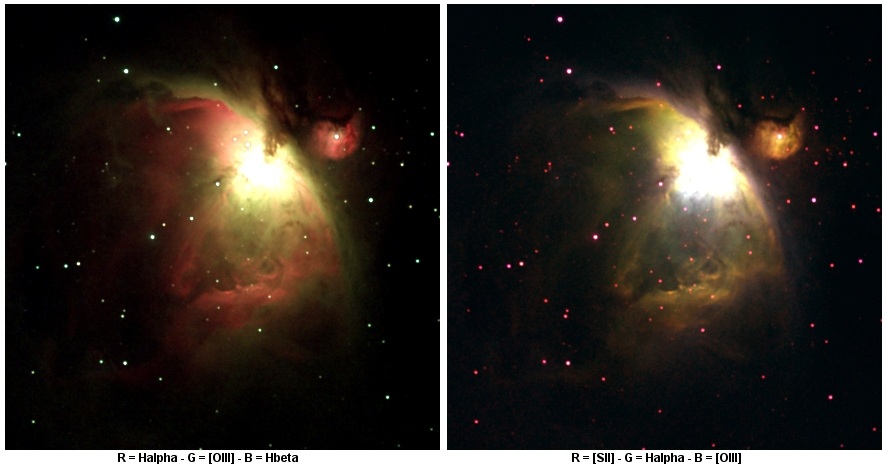
For the image below the original D70 IR cut filter is removed. Additional filters are positioned in-front the D70 camera body (1-inch diameter mounted filter). The telescope is a FSQ-106 refractor.
NGC 7635 field
|
|
|
|
|
|

Note
the presence of very red stars in the IR RG10 composite (enlarged here by a
factor two). These stars are not visible with a D70 + original IR block filter
or an external added IR cut filter.
Black & White view of M52 open cluster (sum of R, G B layers - negative display)
|
|
|
See also for more informations about the D70 this comparative test Canon
10D versus Nikon D70